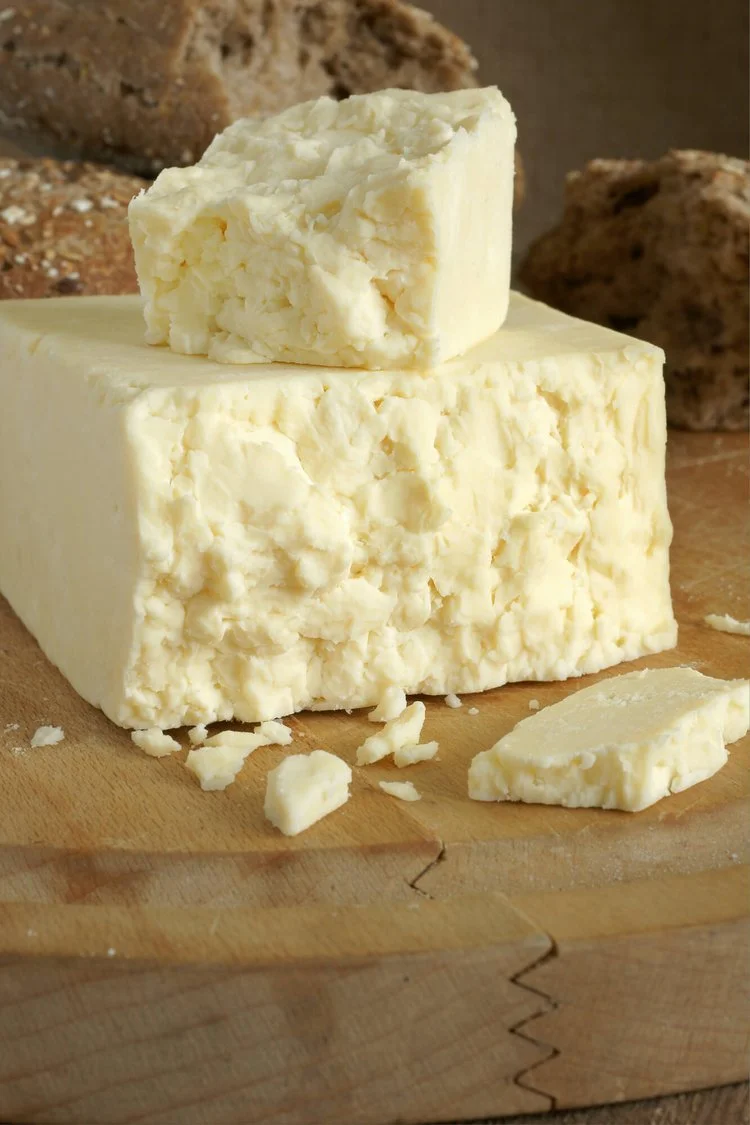Beyond Cheddar - Understanding England's Glorious Cheese History.
England is home to some of the world’s most celebrated cheeses. From the striking, pumpkin-orange interior of Red Leicester to the noble blueing of classic Stilton, few cheese-making regions in the world can boast of producing so many cheeses of such renown.
Stilton is a classic English blue cheese.
English cheesemaking dates back nearly 2,000 years. Evidence suggests the Romans occupying the region at that time used rennet from ruminant animals to create cheese during the summer months, recognizing cheese as an important food source.
For much of the Middle Ages, land ownership practices shaped how cheese was made and consumed. The feudal system of lords and tenants encouraged production that was mostly centralized, taking advantage of the labor available through agricultural workers. Such a system also meant that very little cheese was traded, instead being reserved as sustenance for the local people producing it.
Cheshire has been made since the 17th century.
Outside of private production, cheese was also being produced by England’s numerous monasteries, whose members often brought expertise in cheesemaking with them from France. The repetitious lifestyle, daily routines, and general scientific interests of monks proved extremely useful in cheesemaking.
Many of the early cheeses in England were made from ewe’s milk, especially those made in the more rugged terrain of the north. By the 17th century, cows would become the preferred dairy animal, especially in areas with flatter landscapes and excellent grazing conditions which could support larger herds. This increase in herd size meant more cheese could be made, which led to more wheels traveling to urban areas and, ultimately, abroad to meet the growing demand.
While larger and wealthier producers worked to expand their production and global reach, the rural areas continued to make cheeses to sustain themselves. Their isolation led to the creation of classic cheeses such as Cheshire and Wensleydale.
Montgomery’s Cothbound Cheddar.
Britain is best known for their large, hard wheels. Soft cheeses, known locally as ‘cream cheeses’ are made, but to less fanfare. Made in styles with and without additional cream, these cheeses all shared the common practice of using molds lined with cheesecloth to drain curds during the beginning stages of production. Slipcote, made since the Middle Ages, is the most recognized of the softer cheeses.
It’s impossible to consider English cheeses without acknowledging cheddar’s dominance. With so many different styles made, it’s no surprise that cheddar is adored globally. It’s hard to believe that, for nearly 150 years, cheddar was not the prevalent cheese of Britain.
Prior to cheddar’s ascension, Cheshire was the predominant cheese produced across England. By the middle of the 17th century, more than 4,000 farms were making the crumbly, dense cheese, although the average herd size was only 5 cows - barely enough to create a wheel of Cheshire a day. In the southwestern parts of the country, however, farms would often combine resources to create gigantic, 120-pound wheels that could handle significant aging, often more than 5 years.
From the mid-to-late 19th century, many cheesemakers worked to systematize how cheddar was made, improving the standards of production. Their work improved the quality and consistency of cheddar, increasing the cheese’s durability, allowing it to be transported further across the world. By the start of the 20th century, cheddar had firmly established itself as Britain’s top cheese.
The early 20th century saw a shift in cheese consumption in England. Labor shortages and economic hardships drove dairies to shift production to liquid milk, which in turn caused the need for more cheese to be imported into the country. By 1913, over 82% of all the cheese consumed across the United Kingdom was imported. The rationing needs of both World Wars made matters much, much worse, leading to all matters of production and distribution falling under government control.
The decades that followed saw a massive increase in demand for cheap, supermarket cheese, a trend that pushed farmhouse production closer to extinction. In 1982, retired army major and shop owner Patrick Rance tried to reignite the national love of artisan cheeses with his book, The Great British Cheese Book, writing, “Your clamorous protests alone can save our real cheese from being lost forever in the rising flood of plastic-smothered insipidity!” Rance’s words inspired others to join in the effort to re-establish England as a premier cheesemaker, shifting public sentiment and ultimately reversing the course of cheese manufacturing.
England is now enjoying a cheese renaissance. Not only are traditional English cheeses back in the spotlight, but modern dairy farmers and cheese makers are taking advantage of the vast body of ancestral knowledge available to them, experimenting with style and technique, broadening what it means to be ‘English’ cheese. Goat milk, double-crèmes, washed-rinds and others, nearly unthinkable in the past, are enjoyed by a public eager to support local producers and restore England’s glory on the global dairy stage.
Originally published on www.cheeseprofessor.com on November 24, 2021.



